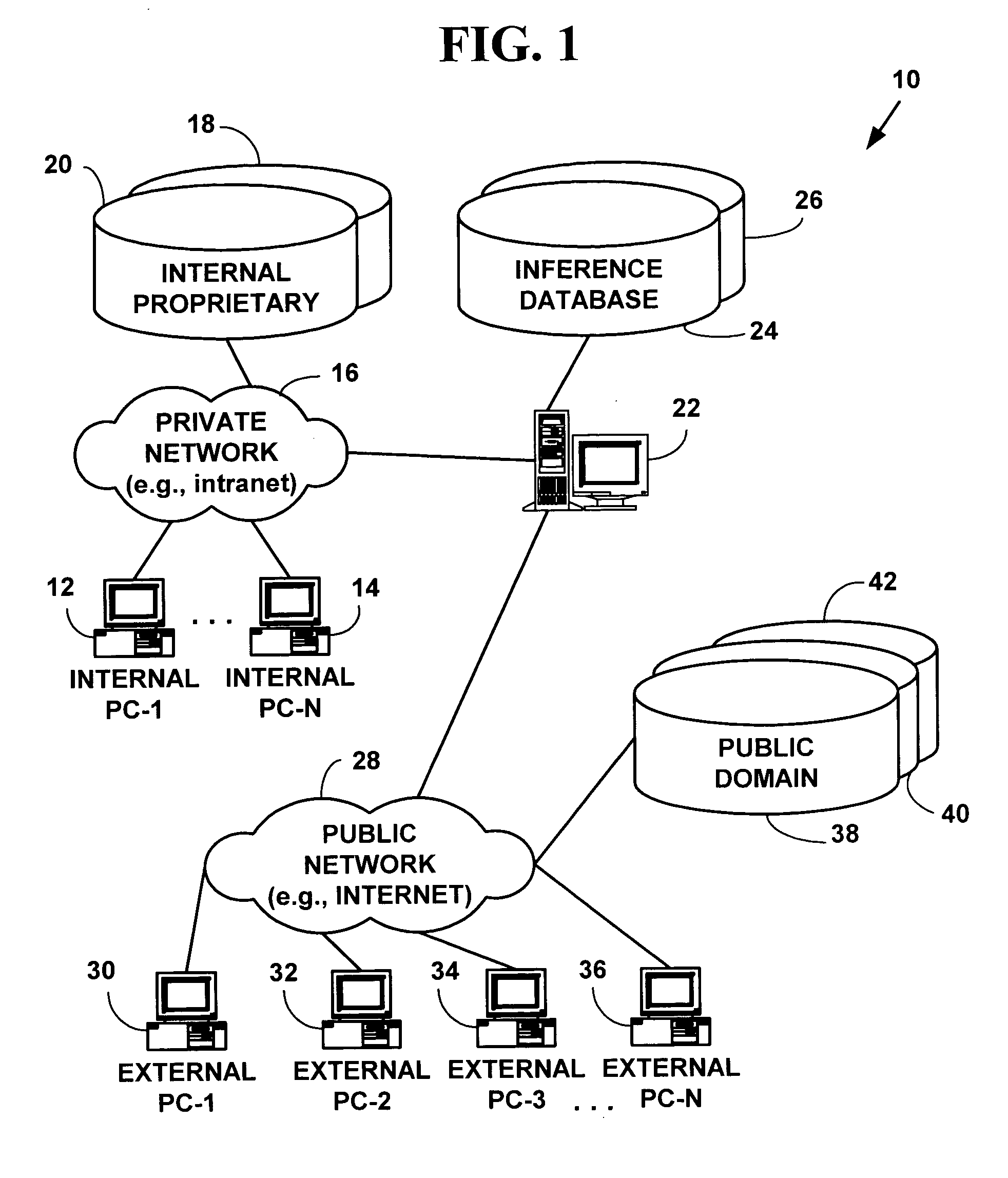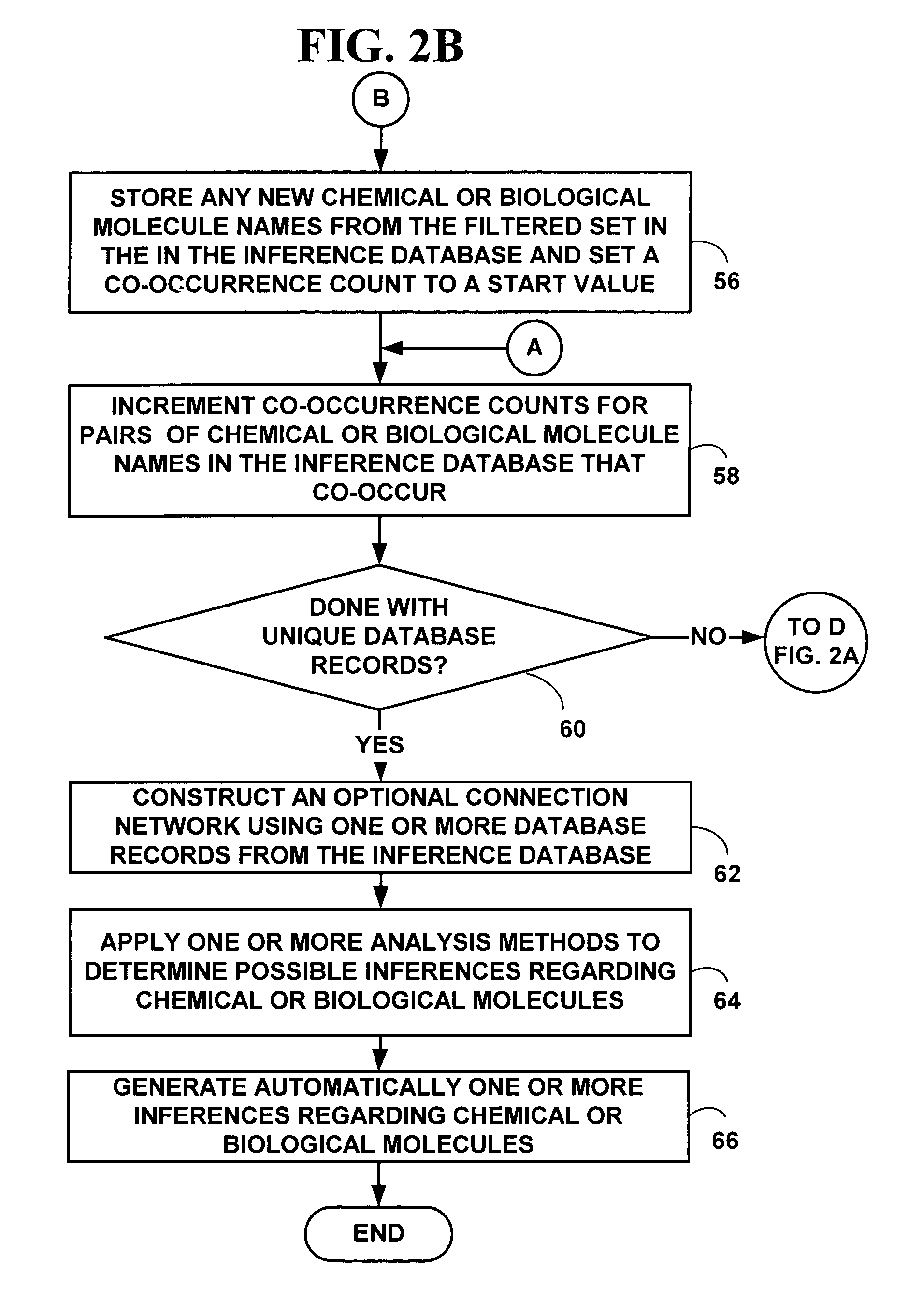Method and system for automated inference creation of physico-chemical interaction knowledge from databases of co-occurrence data
a technology of co-occurrence data and physicochemical interaction, applied in the field of experimental information analysis, can solve the problems of large bottleneck in the analysis and application of such data, inability to analyze experimental results thoroughly, and inability to find new compounds that may look promising at a nucleotide level, etc., to facilitate a user's understanding and analyze experimental results more thoroughly.
- Summary
- Abstract
- Description
- Claims
- Application Information
AI Technical Summary
Benefits of technology
Problems solved by technology
Method used
Image
Examples
Embodiment Construction
Exemplary Data Storage System
[0038]FIG. 1 illustrates an exemplary experimental data storage system 10 for one embodiment of the present invention. The data storage system 10 includes one or more internal user computers 12, 14, (only two of which are illustrated) for inputting, retrieving and analyzing experimental data on a private local area network (“LAN”) 16 (e.g., an intranet). The LAN 16 is connected to one or more internal proprietary databases 18, 20 (only two of which are illustrated) used to store private proprietary experimental information that is not available to the public.
[0039]The LAN 16 is connected to an publicly accessible database server 22 that is connected to one or more internal inference databases 24, 26 (only two of which are illustrated) comprising a publicly available part of a data store for inference information. The publicly accessible database server 22 is connected to a public network 28 (e.g., the Internet). One or more external user computers, 30, 3...
PUM
| Property | Measurement | Unit |
|---|---|---|
| chemical | aaaaa | aaaaa |
| physico-chemical interaction | aaaaa | aaaaa |
| ion concentrations | aaaaa | aaaaa |
Abstract
Description
Claims
Application Information
 Login to View More
Login to View More - R&D
- Intellectual Property
- Life Sciences
- Materials
- Tech Scout
- Unparalleled Data Quality
- Higher Quality Content
- 60% Fewer Hallucinations
Browse by: Latest US Patents, China's latest patents, Technical Efficacy Thesaurus, Application Domain, Technology Topic, Popular Technical Reports.
© 2025 PatSnap. All rights reserved.Legal|Privacy policy|Modern Slavery Act Transparency Statement|Sitemap|About US| Contact US: help@patsnap.com



